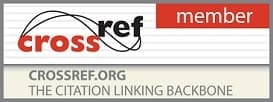- Printed Journal
- Indexed Journal
- Refereed Journal
- Peer Reviewed Journal
P-ISSN: 2394-1685 | E-ISSN: 2394-1693 | CODEN: IJPEJB
Impact Factor (RJIF): 5.38
2020, Vol. 7, Issue 1, Part A
Physical education students’ expectation towards the teachers’ nonverbal and verbal behaviors during classes
Author(s): Aleksander Sztejnberg and Tadeusz Leszek Jasiński
Abstract:
This study presents the results of research aimed at recognizing the first and second year students’ expectations for the teachers’ nonverbal and verbal behaviors during classes. Data were gathered from 214 students of the Physical Education Faculty at Gdansk Academy of Physical Education and Sport in Gdansk. Anonymous “Teachers’ Communication Behavior – TCB” questionnaire was used in this study. Its first part enabled to know the students expectancy for teachers’ both nonverbal immediacy and nonverbal non-immediacy. The second part of this questionnaire contains questions enabling to rate the students’ expectation for verbal teachers’ behaviors. An analysis of the obtained results revealed four significant differences in the degree of the students’ expectations for nonverbal behaviors of the teachers. It was also found that the students want their teachers to show seven attitudes being indicators of their nonverbal immediacy. The obtained results revealed also that the students rather do not accept touching them by the teachers. In case of verbal behaviors, the students want to see teachers’ verbal immediacy and clarity of teaching the students expect from their teachers some behaviors pointing their nonverbal immediacy. They more accept the teachers who are smiling to the whole group, and not to the particular person. On the other side, the students do not accept touching. Students also expect for their teachers verbal immediacy, clarity and matter-of-factness. Differences between mean degrees of intensity the first and second year student’s expectation proved to be statistically significant for four behaviors.
Pages: 04-10 | 979 Views 137 Downloads
Download Full Article: Click Here
How to cite this article:
Aleksander Sztejnberg, Tadeusz Leszek Jasiński. Physical education students’ expectation towards the teachers’ nonverbal and verbal behaviors during classes. Int J Phys Educ Sports Health 2020;7(1):04-10.








 Research Journals
Research Journals